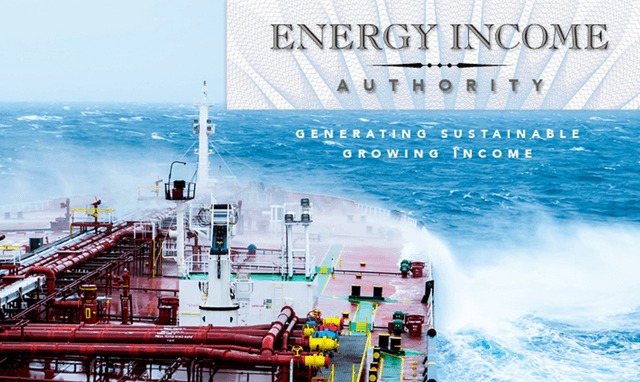Summary:
- Energy Transfer’s pending WTG Midstream acquisition excluded the BANGL Pipeline, resulting in a $175mm price drop.
- BANGL Pipeline was designed to avoid processing and fractionation, with MPLX likely purchasing the 20.0% stake.
- Exclusion of BANGL may impact Energy Transfer’s involvement in a new LNG export corridor and relationship with MPLX.
kodda
Largely missed by the broader financial markets, Energy Transfer (NYSE:ET) put out a press release updating markets on its pending WTG Midstream acquisition. The BANGL Pipeline was no longer going to be included, with the purchase price dropping in kind by $175mm. A paltry sum when compared to the larger purchase price and with guidance for distributable cash flow growth per share remaining intact, it is easy to see why the market glossed over this. But for me, it is a blow to the deal from a non-financial perspective, and I think it also likely means that MPLX (MPLX) has some interesting plans at work.
The BANGL Pipeline
BANGL was not mentioned heavily in the original press release, but it was something I spoke about in the recap on the WTG Midstream deal privately (see “Energy Transfer: WTG Midstream Motivations“). I think it’s worth talking about natural gas liquids (“NGLs”) markets more heavily soon and the dynamics between the largest hub in the Midwest – Conway – and the ever prominent Mont Belvieu and smaller Sweeny hubs, but what is important about BANGL is that it was designed to dodge processing and fractionation at all three.
Before getting into that though, we’ve got to start with what BANGL’s ownership structure is. It’s a joint venture between MPLX, privately held WhiteWater Midstream, WTG Midstream, and Rattler Midstream (now part of Diamondback Energy). All of these parties have a right of first offer (“ROFO”) provision in the venture, meaning that WTG Midstream would have to consider offers from the other BANGL partners before unilaterally accepting the deal. We’ve been talking about provisions like this recently, such as with the Hess Corporation (HES) deal, but remember that is a right of first refusal (“ROFR”); not ROFO. Since BANGL is being excluded, we know that one of the three remaining parties bought that 20.0% stake.
The lack of a press release from MPLX or Diamondback Energy might signal that it was privately held WhiteWater that purchased that stake, but it’s more likely that it was MPLX and the small size was enough for management to not warrant putting out a filing. BANGL was originally a wholly MPLX concept, pitched as a way for Permian producers to ship Y grade (or raw, mixed NGLs) from Texas to export markets without a stop at Mont Belvieu. Instead, MPLX wanted to build fractionators in Texas City where it has a large presence, ultimately moving purity products like ethane and propane to its own planned export terminal locally. The pandemic derailed that plan, but times change. Demand has more than recovered domestically and internationally, and MPLX and the joint venture partners have begun the process of reviving the system, albeit at a smaller scale. They are also years away, as MPLX has not even received permits yet for its planned fractionation and export facility – never mind reaching final investment decision (“FID”). Instead, for now, BANGL ships its volumes on EPIC Midstream’s Y Grade Pipeline, with volumes ending up at third-party fractionators in Robstown or Sweeny.
While Energy Transfer is proceeding with the WTG Midstream acquisition without it, I do view this as a loss. Purchasing BANGL was a way to get involved, albeit as a minority owner, as a stakeholder in a new LNG export corridor. Senior leadership has spoken quite often about getting more scale on the export side for hydrocarbons, and with Lake Charles LNG mired in controversy and Blue Marlin in a tough race with three other crude export facilities, new assets are tough to add to the portfolio. So, if you take a rosy view, it would have been a way to cultivate a relationship with MPLX, perhaps back-ending into buying an interest in its (very early) planned NGL export facility at Galveston Bay. Or, if you’re a believer in shrewd corporate tactics, as minority owner Energy Transfer would have been privy to material non-public information on the plans of MPLX et al when it comes to developing this new network – assets that will compete with Nederland where Energy Transfer is building substantial NGL infrastructure on site (ship docks, refrigeration, fractionation) or at Mont Belvieu where it owns around 25.0% share of fractionation capacity – a hub BANGL aims to circumvent.
Takeaways
We’ll learn more on this during Q2 conference calls and SEC filings, where we’ll learn exactly who exercised the ROFO (MPLX and Diamondback will disclose in 10-Q filings, if not during the quarterly press releases). MPLX has not talked much about its plans for Texas City in recent years, but with permitting activity going on in the background and with this transaction taking place, we might see some chatter. Energy Transfer, outspoken as always, likely will field questions on the BANGL exclusion and how it views the NGL markets in Texas going forward.
Editor’s Note: This article discusses one or more securities that do not trade on a major U.S. exchange. Please be aware of the risks associated with these stocks.
Analyst’s Disclosure: I/we have no stock, option or similar derivative position in any of the companies mentioned, and no plans to initiate any such positions within the next 72 hours. I wrote this article myself, and it expresses my own opinions. I am not receiving compensation for it (other than from Seeking Alpha). I have no business relationship with any company whose stock is mentioned in this article.
Seeking Alpha’s Disclosure: Past performance is no guarantee of future results. No recommendation or advice is being given as to whether any investment is suitable for a particular investor. Any views or opinions expressed above may not reflect those of Seeking Alpha as a whole. Seeking Alpha is not a licensed securities dealer, broker or US investment adviser or investment bank. Our analysts are third party authors that include both professional investors and individual investors who may not be licensed or certified by any institute or regulatory body.

Are you an investor looking for quality research within the oil and gas industry? Energy Investing Authority is the source. While commodity prices are up and so too are shareholder dividends, it can be easy to chase yield and buy the wrong firms. Income investors cannot afford those mistakes.
Deep dive analysis forms the foundation of the platform. Hundreds of companies fall under the coverage universe, from pipelines to renewables to producers. Receive actionable research to keep your portfolio outperforming benchmarks – the EIA portfolio has done so six out of the past seven years.
Sign up for a NO OBLIGATION FREE TRIAL today!
